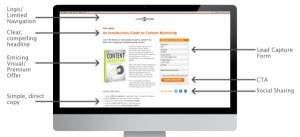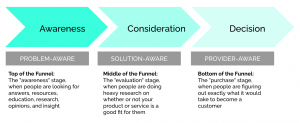Leaders frequently make miscalculations in trying to influence change. Too often, they bet on a single source of influence rather than tap into a diverse arsenal of strategies. Our research shows that the main variable in success or failure is not which sources of influence leaders choose. By far, the more important factor is how many.
Influencers succeed where others fail because they know persistent problems are rarely fed by a single cause but rather a conspiracy of causes. Instead of looking for the minimum it will take to accomplish change, influencers combine a critical mass of different kinds of influence strategies.
To arrive at this conclusion, we studied nagging organizational problems such as bureaucratic infighting, lack of collaboration, and low compliance with quality or safety standards. Although more than 90 percent of the executives we interviewed described their problems as powerfully “destructive,” even “cancerous,” few had done much to confront them.
We got similar results when we surveyed executives and senior managers. About 40 percent of these executives had made some attempt to influence change. In doing so, however, the vast majority had employed only one influence strategy. A handful—fewer than five percent—had used four or more sources of influence in combination. However, the difference in outcomes was astounding. Those who used four or more sources of influence in combination were ten times more likely to succeed than those who relied on a single source of influence.
The evidence is clear. By using four or more influence strategies in combination you exponentially increase your chances of success. But what are those sources and how do you actually target them?
The Six Sources of Influence:
Our model organizes influence strategies into six sources. Motivation and ability make up the backbone of this model which is then subdivided by three domains: personal, social, and structural.
The first two domains, Personal Motivation and Ability, relate to sources of influence within an individual that determine their behavioral choices (motives and abilities). The next two, Social Motivation and Ability, relate to how other people affect an individual’s choices. And the final two, Structural Motivation and Ability, encompass the role of nonhuman factors, such as compensation systems, physical space, and technology.
Using this model, here is how successful leaders employed strategies in each source to exponentially improve their chances of success:
Source 1: Link to Mission and Values
Many healthy behaviors are boring, uncomfortable, or even painful. And many unhealthy behaviors can be pleasurable. Reasonable people resist things that are uncomfortable or stressful, which is why most change efforts fail.[1]
True influencers understand that human beings are capable of fundamentally transforming their experience of almost any activity. To influence people to make changes, effective leaders establish a moral framework that helps people connect new behaviors to their deeply held values. If leaders fail to engage values, they’re forced to use less effective sources of motivation like carrots and sticks.
Source 2: Overinvest in Skill Building
True influencers understand that new behaviors can be far more intellectually, physically, or emotionally challenging than they appear on the surface. So they invest heavily in increasing personal ability.
For example, Mike Miller, a former vice president of AT&T, saw that people needed more than motivation to speak up and save failing projects—they also needed the ability to voice their concerns. By providing the right kind of training, Miller turned around his 3,000-person IT function and created a culture where everyone spoke up early and honestly about the risks they saw affecting project goals.
Source 3: Harness Peer Pressure
Effective influencers understand that what shapes and sustains the behavioral norms of an organization are lots of small interactions. They realize that unless they positively aligned social actions, their chance of influencing change is slim.
When Ralph Heath was tasked to get the F-22 Raptor into production in 18 months, he knew he needed the support of 5,000 Lockheed Martin employees. Unable to gain the trust and support of everyone, Heath invested time in the most influential people—both the formal leaders and the opinion leaders. He met monthly with supervisors, managers, and informal leaders to candidly review their concerns and foreseeable problems. As Heath won the trust of opinion leaders, they influenced others. In the end, the performance of Heath’s group exceeded expectations and met production deadlines.
Source 4: Create Social Support
If you focus only on the motivating power of the people around you, you limit your own influence. The reality is that people around you don’t just motivate—they can undermine behavior as well.
At AT&T, Mike Miller was charged with improving his group’s track record in meeting quality, schedule, and cost targets. He found that the ability to discuss mission-critical issues rapidly and honestly with co-workers was essential for employees. Unfortunately, leaders didn’t always enable this behavior. So to make leaders accessible and available, Miller taught them new skills and tasked them with teaching the skills to their direct reports. The process cascaded down through the organization and the skills became ingrained in the culture.
Source 5: Align Rewards and Ensure Accountability
If you want to understand people’s priorities, follow the money. If a leader talks about quality but rewards productivity, employees will notice. Chronic problems such as lack of accountability, poor productivity, and slipshod quality can often be traced to poorly designed incentives that reward the wrong behaviors.
Employees at all levels need to see incentives for changing. People won’t support change if the behavior management wants to encourage doesn’t make their lives better. However, our advice is to use incentives third, not first. Otherwise, you might actually undermine people’s intrinsic motivation[2]. Begin with personal and social sources of motivation, and then reinforce them with well-designed incentive systems.
Source 6: Change the Environment
If you want to change an organization’s mental agenda, you need to change the data that routinely crosses people’s desks. Pat Ryan, former vice chairman of OGE Energy, was concerned about a subsidiary’s reputation for being insufficiently customer driven. To turn things around, Ryan established a companywide target of having streetlights repaired within five days and created a weekly reporting mechanism to help managers monitor outages. Shortly, all but two areas had completely solved the problem.
Sometimes companies need to make structural changes to influence behavior. Spectrum Health Grand Rapids (in Michigan) went so far as to create a physical space where people can brainstorm ideas without distractions. In the first year, company employees identified 35 ideas to pursue commercially and received provisional patents on three of them.
Conclusion
Effective influencers drive change by relying on several different sources of influence strategies at the same time. Those who understand how to combine multiple sources of influence are up to ten times more successful at producing substantial and sustainable change.
[1] J. Stewart Black, Hal B. Gregersen, Starts with One: Changing Individuals Changes Organizations, Wharton School Publishing, 2008
[2] Deci, E. L. (1975). Intrinsic motivation. New York, Plenum Press.
(170)



